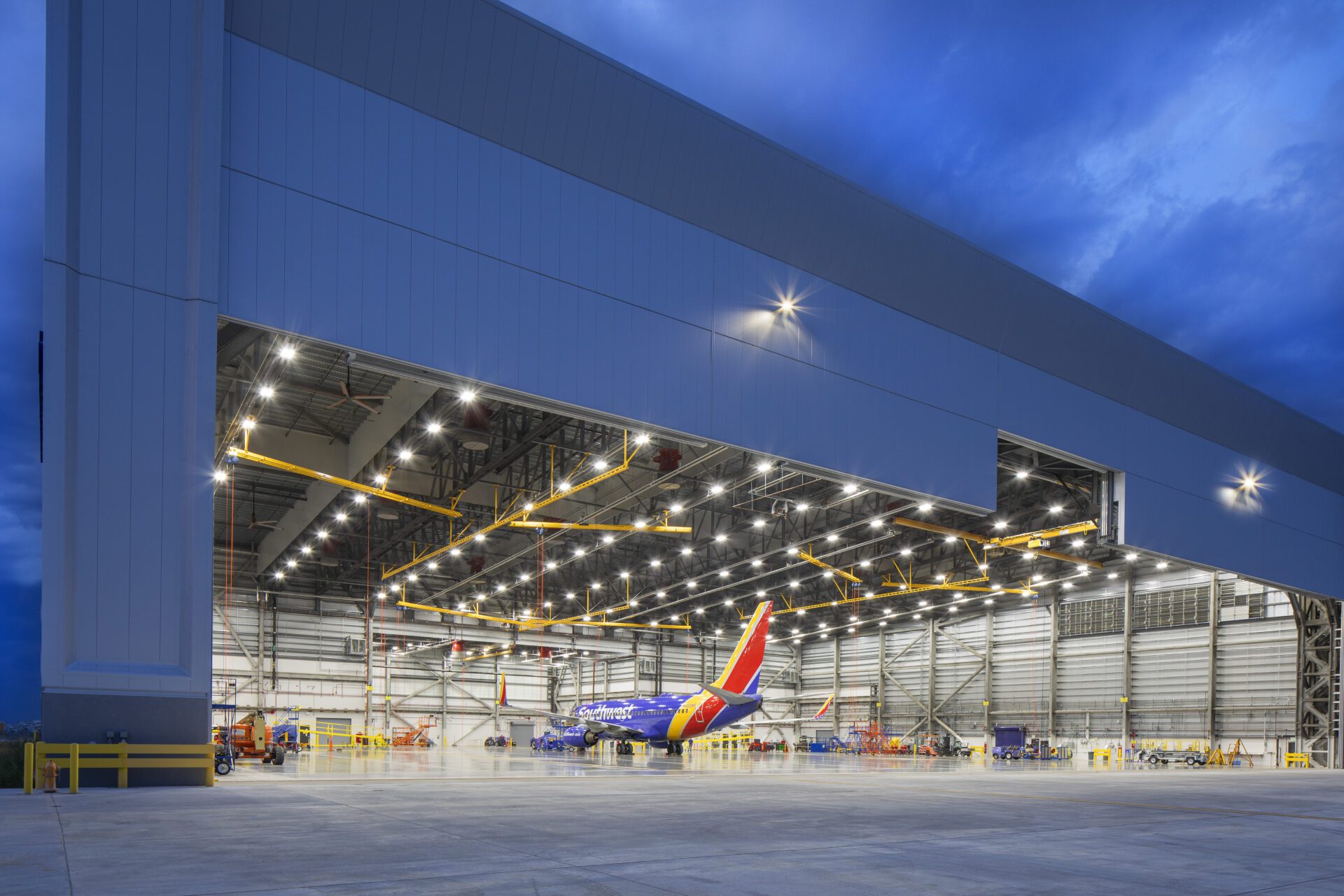Southwest Builds Maintenance Hangar at Denver Int’l
In aviation and architecture, the horizon is ever-distant. At Denver International Airport (DEN), sightlines are clear, and the future looks bright. Presently the third-busiest airport in the United States, DEN is growing on many fronts. Its recently completed Concourse Expansion Program added 39 new gates during a multi-year project that overhauled the airport’s footprint. Meanwhile, the ongoing $1.3 billion Great Hall
improvement project that kicked off in 2022 is expected to continue into the summer 2028. Among it all, Southwest Airlines’ new hangar, which opened on the eastern edge of the airfield in March 2022, represents a $100 million investment of permanence.
“DEN takes a lot of pride in our partnerships with Colorado communities and the airlines that we serve,” says George Karayiannakis, senior vice president for Airline and Commercial Affairs. As the main economic driver for Colorado’s Front Range, DEN injects an estimated $33 billion annually into local economies, and fully 60% of its passengers are on origination and destination flights. Since opening in 1995, DEN has grown from 33.1 million annual passengers to a pre-pandemic high of 69 million. And airport leaders have their sights set even higher with Vision 100, an initiative to grow annual enplanements to 100 million passengers in the next eight to 10 years.
“We are delighted that Southwest chose DEN as the site for its new hangar,” says Karayiannakis. “Southwest announced this project in 2019. They made a tremendous investment and showed incredible fortitude to keep working through COVID.”
Building Big
Designed to house three 737 airplanes and park eight more on the apron, the 128,000-squarefoot hangar is the first of its kind to open at DEN. The heavy steel and structural concrete building features a 207-foot clear span that is nearly the length of a football field, and required 48,000 cubic yards of concrete to construct. Airport leaders attribute its reduced carbon footprint to creative problem solving by the project team. The large, specialized facility is also a template for other similarly sized hangars the airline is currently planning at strategic locations throughout the U.S.
“DEN is a key cog for Southwest,” says Jay Fretwell, Sr., the airline’s manager of Facilities Projects. Fretwell oversees a team of nine project managers who lead construction projects for the 121 U.S. airports that Southwest serves. His team develops plans with designers and builders for everything from mega-assets such as hangars to small back offices and ticket counters. When developing the recent project at DEN, Southwest worked with designers from Ghafari Associates to address the facility’s inherent need to accommodate larger, more complex aircraft. “We expect this hangar to be in operation for the next 50 years,” says Fretwell. “It was designed and built for airplanes that don’t even exist today.”
For starters, the supersized facility required a supersized door. Technically five doors in one, the Megadoor stretches the length of the building with a tail pocket in the middle. The five fabric doors can fold up in sections, either individually, in groups, or all together. Above, the hangar’s central overhead structural member is a box truss that stretches the full 270 feet of the hangar and weighs 180,000 pounds. The truss was so large it required special pre-installation planning by the building team from Swinerton Construction Company. Due to FAA regulations limiting crane heights next to taxiways, Swinerton led an extensive search to find the right combination of low boom height and high strength. In a single day, a 500-ton Hydra crane and a 300-ton conventional crane swung the truss into place and held it there until workers secured it with bolts and welds. Due to the extreme length and loading, Swinerton used 3-D laser scans of the truss on the ground, after it was in place, and after it was roof-loaded to validate that the camber remained within tolerance. Like other facilities at DEN, Southwest’s new maintenance hangar was developed with the environment in mind. As construction was getting underway, builders took note of the airport’s waste concrete storage yard just across a fence from the jobsite. Working with Southwest and DEN, Swinerton brought in a crusher and recycled the existing concrete to use as subgrade fill. This saved a tremendous amount of time and money that would have been spent acquiring, hauling and handling such material. It also significantly reduced the building’s embodied carbon count.



